5 Compliance Risks Hazardous To Food And Beverage Facilities
Post by : Anthony Tobar | Post on : January 9, 2023 at 4:50 pm
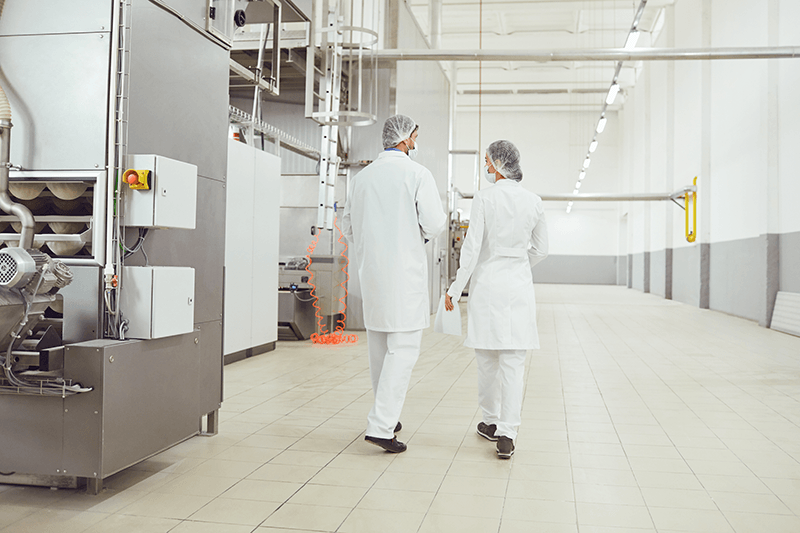
Of all the major industries, food and beverage is perhaps the most heavily regulated.
This is for good reason, since food safety violations in controlled environments can result in foodborne illnesses and death in the most severe cases.
Another thing that’s just as troubling are the immediate consequences processors and distributors face if something like this were to happen at their facilities. We’re talking: fines and penalties, media scrutiny, and even shutdowns.
One could also say it would damage their corporate reputation, while calling into question the oversight practices of the food & beverage industry as whole.
But let’s face it, the FDA, SQF, USDA and others aren’t going to stand by and let this happen.
Quite the opposite, actually, given their likelihood to issue violations rather than risk leaving anything to chance on their watch.
So the real question is:
How do facilities and operations specialists—responsible for maintaining the safety and sanitation of controlled environments—put their best foot forward when facing regulatory audits and inspections?
To answer this we must first uncover 5 major food safety and compliance risks that could land you in hot waters with the powers-that-be, if left unchecked.
Only then can you actually know what steps to take to stop regulators from breathing down your neck!
RISKS TO BE CONTROLLED AT
FOOD & BEVERAGE FACILITIES
1. CORROSION
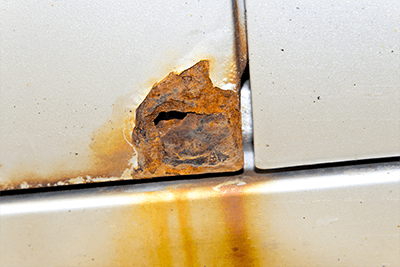
Given daily sanitation procedures, involving extreme moisture and harsh chemicals, corrosion is one of the most critical threats to food quality and safety. In fact, according to NACE International, the world’s leading corrosion control organization, yearly corrosion-related costs in the food & beverage industry exceed $2 billion.
Regulators therefore are never content to let rusty surfaces that can contaminate food and beverage products—either through direct or indirect contact—go unresolved.
Instead, in environments where they are most easily exposed, such as processing and packaging, they’ll almost certainly hand down some form of punishment if they deem surrounding equipment or materials no longer suitable in resisting corrosion.
2. CONDENSATION

Aside from the fact that condensed water droplets can contaminate food and beverage products—through all sorts of impurities and microorganisms—they also create slipping and falling hazards on the ground. Studies have shown, for instance, that 30% percent of workplace injuries in the food & beverage industry can be traced back to accidental slips.
This is particularly the case in high-moisture environments that involve two-way air exchanges on a regular basis, like cold storage facilities where warm air makes its way through the top of the cooler or freezer and cold air escapes along the bottom.
So, in the event your cold storage facilities are prone to heavy traffic, this means it won’t take long for regulators to call out accumulated condensation displayed by obvious water marks and puddles that put on-duty personnel in harm’s way.
3. INFESTATIONS

Infestation threats involving any number of bugs, insects, and pests are of dangerous concern for food safety, as they have been shown to spread diseases, damage products, and compromise the integrity of food and beverage environments.
And while there are many alternatives that claim to “boost pest control,” most of them do so after intrusions have taken place. Keep in mind, however, that in specific areas where bugs and insects are likely to convene—such as warehouse and dumpster openings—this can happen almost regularly.
As for regulators, their first order of business won’t be to help you get rid of these pests. They’ll be far more concerned with how they were able to breach your defenses in the first place, likely handing out a violation notice in the process.
4. OCCUPATIONAL ACCIDENTS
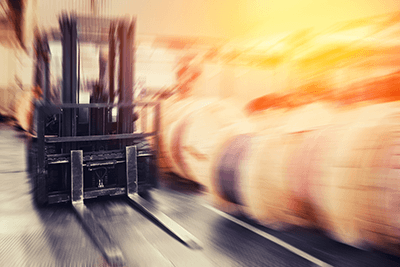
The potential for accidents in fast-paced industrial environments isn’t something that should be taken lightly, especially when they can lead to severe injuries and production losses that someone eventually has to answer for.
So, before it’s too late and the damage is done, the very best thing you can do, starting now, is mitigate any potential accident risks by making sure not to overlook any equipment that can break easily and cause bodily harm.
Once that’s out the way you can go back to work knowing you’ve done everything in your power to ensure the safety and security of your facilities, which means regulators won’t be able to say or do anything that you won’t be prepared for.
5. AIRBORNE CONTAMINATION

Whether in liquid or solid form, what most contaminants, specifically bioaerosols, have in common is that they travel by air, infusing anything they touch with harmful microbes. As Food Safety Magazine puts it, these very same airborne contaminants pose a “substantial risk” to products such as dairy, raw meats, and fruit juices.
Of the various sources for airborne contamination some of most common ones include inefficient processes and equipment filters, which allow water and dust to make their way into areas where food and beverage products are being packaged or prepared.
Regulators are all too aware of this, so you can be sure they’ll pay extra-close attention to any sort of gaps where bacteria and viruses, found within bioaerosols, can easily cause Salmonella, E. coli, and Lysteria just to name a few.
Read More
6 Urgent Reasons To Consider Essential Door And Dock Maintenance
Post by : Anthony Tobar | Post on : January 9, 2023 at 4:38 pm

At some point, you may have encountered vendors in charge of servicing doors and docks at your facilities trying to sell you on preventive maintenance.
And while it’s true that even the toughest equipment will eventually fall victim to wear-and-tear damage under harsh conditions, maintenance providers often leave this out:
Not every bit of wear-and-tear that shows up requires your immediate attention.
That’s right, given everything you have on your plate already—scheduled tasks, employee meetings, paperwork, etc—it’s the essential requirements that deserve your attention more than anything. The very same ones that leave you exposed to downtime, safety hazards, and compliance risk, if left unchecked.
So where others are hesitant to draw lines between what can and cannot wait, it’s only right, for the sake of facility operations, that you’re finally made aware of 6 urgent requirements essential door and dock maintenance keeps you prepared for at all times!
ESSENTIAL REQUIREMENTS FOR
DOOR & DOCK MAINTENANCE
1. OPERATIONAL WORKFLOW

One of the primary functions of equipment at your facilities is to allow people and goods to move from one place to another. Without this it simply isn’t feasible to make or distribute any of your products—let alone receive payment for getting them into the hands of your customers.
As a result, when door and dock equipment designed to facilitate operational workflow fails, what often follows is a sudden break in the action that can force productivity to come to a standstill for as long as the problem remains unresolved.
Fortunately, this an area where an essential maintenance program has you covered, by routinely assessing wear-and-tear damage to workflow-related doors and docks, prior to taking care of repairs that are necessary to keeping facility operations in motion and productivity on track!
2. EQUIPMENT INTEGRITY

For mission-critical equipment to function properly it must be working together as a unit, like originally intended. Only then can it actually serve its purpose without becoming unreliable or turning into a flat-out liability that causes way more problems than it solves.
So, in the event that one or more equipment parts integral to the safety of your doors and docks were to reach the point of no return, it wouldn’t be out of the question to assume catastrophic failure for the entire system.
Unless, of course, you had the protection of an essential maintenance program focusing strictly on uncovering the most severe forms of wear-and-tear damage, while at the same time providing high-priority repairs to doors and docks that can’t be allowed to fail!
3. SAFETY AND EHS
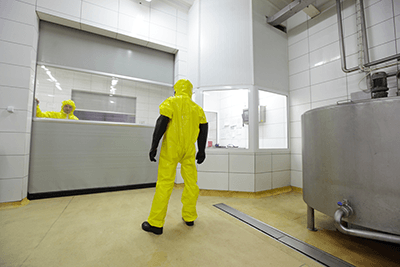
Equipment specifically designed to protect your products, processes, and personnel from environmental hazards should never be overlooked. On the contrary, they deserve the utmost attention, considering they’re an object of extreme scrutiny from outside regulators.
In fact, even the slightest breach could be a big cause for concern, since compliance violations related to unsanitary doors and docks can carry strict penalties like mandatory fines and shutdowns until the problem is fixed.
Given this strong emphasis placed on environmental safety, an essential door and dock maintenance program proves its worth by anticipating immediate concerns (no matter how small) and bringing a swift resolution to dangerous threats—before the damage is done!
4. SECURITY
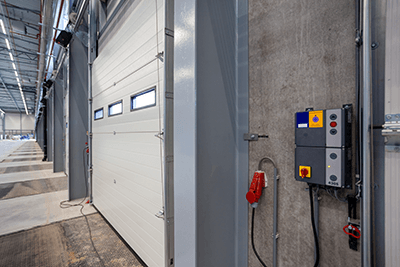
Optimal security inside and outside of facilities depends on integrated measures that can respond at a moment’s notice. This way, you and personnel don’t have to feel increasingly vulnerable, compromised, or unprepared in case of a serious and unforeseen accident threat.
Still, accidents can happen, and if existing door and dock equipment isn’t up to task of performing its security functions right when you need them, then the consequences could lead to prolonged facility exposure and even physical damage.
The good news is, an essential maintenance program keeps all of this under control for you by closely monitoring door and dock security, making sure to correct any irregular protocols long before they have the chance of backfiring on what that matters most!
5. FIRE STANDARDS
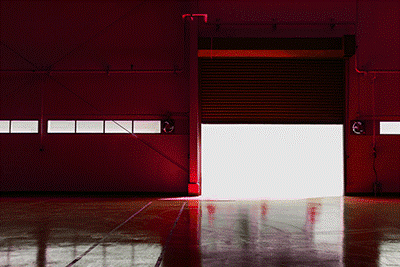
Fire standards are there to protect facility operations from going up in flames. For this reason they should always be treated with extreme caution—should you ever have to rely on them to insulate you from the devastating effects of unexpected fire incidents.
But aside from being legally enforced, even the smallest fire door oversight puts your property and operations at risk, also endangering the lives of innocent people who are simply doing their job.
Extremely vigilant, therefore, of the dangers and legal requirements surrounding fire safety, one of the top priorities an essential maintenance program tackles immediately is the appropriate testing and repair of fire-rated doors that must be up to code!
6. SANITATION

Given the highly infectious spread of COVID-19, sanitation is a pressing issue that won’t be going away any time soon, for the simple reason that everybody is at risk of being exposed.
That said, if there’s one thing you can count on it’s that any basic measures you’ve come to rely on will no longer be enough, since sanitary procedures are sure to become stricter than at any time in the past for doors and docks.
Because of this, an essential maintenance program that adheres to the latest federal and state guidelines for sanitary facility access could simply not come at better time, and will ultimately prevent you and everyone who uses yours doors from getting infected!
Read More
Eliminate Downtime And Door Emergencies With These 3 Indestructible Solutions
Post by : Anthony Tobar | Post on : January 6, 2023 at 9:23 pm
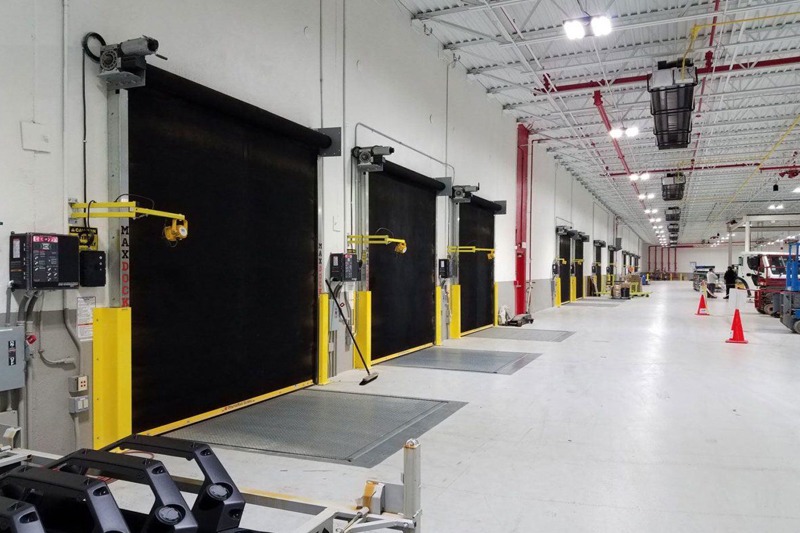
In today’s rugged industrial environments tasked with achieving bigger and better results—faster—most roll-up doors just don’t cut it anymore when compared to what’s out there.
Operations and facilities specialists at fast-paced industrial plants, warehouses, and distributors are finding this out the hard way.
Whether it’s through frequent accidents and collision damage, downtime, or emergency maintenance costs that are increasingly hard to swallow, low performance roll-up doors are killing operational efficiency.
What’s worse?
This can pose great risks to a company’s bottom line, corporate reputation, and, in the worst cases, even the job security of the specialists responsible for making sure facilities are running smoothly and delivering results.
Fortunately, it doesn’t have to end this way.
That’s because leading companies in blue chip industries are trading in their rolling steel doors for a special type of door that’s safer, more durable, and better equipped to handle your high-traffic applications, without fail: impactable rubber doors.
So what makes them the top roll-up door for industrial facilities prone to accidental damage?
Below is everything you need to know about these three indestructible solutions that outperform the competition!
IMPACTABLE ROLL-UP DOORS ELIMINATE
EMERGENCY DOWNTIME
1. MAXSPEED™

Known by its makers as the “toughest high speed rubber door on the market,” MaxSpeed™ is unmistakably suited for large openings across logistics and transportation facilities, such as airport terminals and bus stations, as well as manufacturing, distribution, and utilities facilities that rely on fast, continuous heavy-duty operation.
But more than just its ultra-efficient opening speeds and safe springless design, what makes MaxSpeed™ the ultimate roll-up door of its kind is its unique ability to make unexpected downtime and emergencies a thing of the past, with its fully impactable breakaway system and 1,000,000 cycle rating.
While this alone is enough to satisfy even the most stringent demands for reliable security across busy openings prone to impact damage, nothing puts operations and facilities specialists more at ease than the peace of mind that comes standard with the lifetime warranty on all MaxSpeed™ rubber curtains!
2. MAXDOCK™
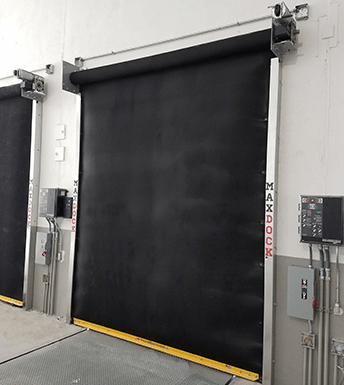
Earning its nickname as “the last dock door you’ll ever buy,” MaxDock™ is a high-efficiency replacement to damage-prone sectional doors that are all too common across busy warehouses in the logistics and distribution, manufacturing, food & beverage, and pharmaceutical industries.
Featuring a fully impactable design, along with its breakaway bottom bar that resets itself automatically when struck by forklifts and other moving objects, this rubber dock door also saves you thousands of dollars in emergency repair costs across multiple positions every single year.
But as with all things concerning the safety and security of warehouse and loading dock operations, MaxDock™ wouldn’t be complete without its lifetime rubber curtain warranty and standard 1,000,000 cycle rating—there to take the risk off your shoulders and help you keep up with the pace of business!
3. MAXPRO™
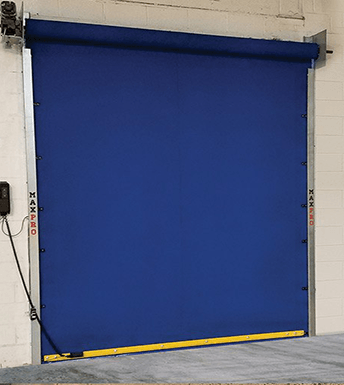
A high performance solution for rugged industrial openings, MaxPro™ is a superior alternative to rolling steel doors, and an ideal fit for warehouses, manufacturing plants as well as utilities and transportation stations that rely on uninterrupted facility access no matter what.
By combining its impactable, springless design with only 5 moving parts—including a powerful direct-drive motor rated for over 1,000,000 cycles—MaxPro™ doesn’t just deliver extreme toughness and security all-year-round, it also gets rid of emergency threats associated with virtually any type of door accident.
Since you might have guessed that MaxPro’s™ advanced rubber curtain is backed by a lifetime warranty (like all PerforMax® models), you should also know it can be equipped with a custom array of safety features, for those who can’t tolerate unwelcome surprises any longer!
Read More
Worst And Best Ways To Control Pests At Packaging Plants
Post by : Anthony Tobar | Post on : January 6, 2023 at 9:04 pm

Infestation threats are a sanitation nightmare for food, beverage, and drug safety.
Yet they happen almost regularly, according to a 2015 research report by Renktoil North America, increasing business operating costs by over $6 billion dollars, with a loss of revenue surpassing $13 billion.
All thanks to insects and pests that prefer nothing better than making products and ingredients their favorite landing spots, introducing germs that cause diseases like Listeria and Salmonella into production and packaging plants.
Disturbing as this is on its own, it leaves out the risk of compliance violations regulators are forced to issue—under Title 21 of the FDA’s Code of Federal Regulations—if traces of pest contamination are found during inspections.
Fines, penalties, and even temporary shutdowns until the situation is fully under control wouldn’t be out of the question, which is why no shortage of pest control solutions are thrown at facilities and operations specialists relying on strict sanitation.
As for how effective they actually are at dominating pests, well, keep reading to find out!
PEST CONTROL ALTERNATIVES AT
PACKAGING PLANTS
1. CHEMICAL SOLUTIONS

Whether in liquid, gas, or solid form, chemical-based pest control is designed to kill off whatever harmful organisms plague your environment. And, yes, while they can be deadly effective at ridding your facilities of unwanted pests, they’re also inherently toxic and can cause serious illness, depending on the agents being used and the level of human exposure. For this reason the Environmental Protection Agency (EPA) urges chemical-based solutions only as a last resort, in order to preserve indoor air quality.
2. ENVIRONMENTAL CLEANLINESS

Falling under the well-established norms of prevention, environmental cleanliness is the most sweeping form of pest control. It includes primarily the proper handling and disposal of trash, observance of strict cleaning protocols, and close facility systems monitoring, like plumbing leaks, often a source of hydration for populations of pests. But while indispensable as a first line of defense, it’s nearly impossible to keep track of every environmental issue that can go wrong at any given time, which is why you’ll always be left vulnerable to pest intrusions taking place on a micro-level.
3. SCREEN BARRIERS

Encompassing protective hardware that can be conveniently erected at known entry points for pests, physical barriers, a recognized pillar of Integrated Pest Management (IPM), is the only approach that offers prevention and protection simultaneously. It does so with the help of screen meshes that stop pests from breaking into packaging plants in the first place. What’s more, federal regulators and industry experts alike widely recommend their use, given the sanitation risk benefits and safety upside they provide not just your operations but also employees.
Read More
Commercial Facilities: Hacks For Boosting Energy Efficiency Fast
Post by : Anthony Tobar | Post on : January 6, 2023 at 8:43 pm

One of the largest cost-drivers for commercial facilities is energy bills, typically around 15% of warehouse operating budgets, and much more for refrigerated ones.
So it’s surprising to know that, according to the U.S. Environmental Protection Agency, energy loss has reached the staggering mark of 30%, on average.
Where is the waste coming from?
The short answer is, from materials, equipment, and processes better designed to let precious energy escape than conserving it for greater overall efficiency.
But it’s not like their wasted energy only comes due when it’s time to pay the bills, since they also push productivity downward, send carbon footprints soaring, while cutting into annual profits and returns.
Here’s the other thing: Energy loss can’t be fixed by working harder, because a portion of what you stand to earn and save will always go to waste with equipment and materials inefficient at climate control.
For the greatest gains, without the losses, more efficient alternatives are needed—known as energy-savers!
EFFICIENT ENERGY-SAVERS FOR COMMERCIAL FACILITIES
1. INSULATION MATERIAL
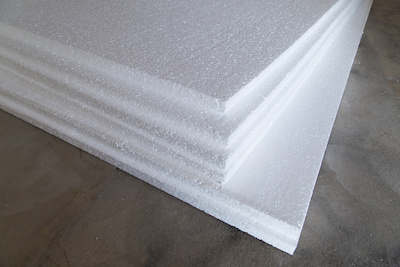
Materials that perform the task of insulation vary, based on the application they’re needed for and their cost-to-benefits. But what allows you to get the most out of your investment in thermal-resistance, climate control, and energy-efficiency is insulation R-value.
So when choosing the insulation materials right for you, a few things to consider, in addition to maximum R-value per dollar, is the level of air filtration and durability to be expected from available options, as this will ensure the least amount of energy loss for the longest duration.
2. PERIMETER SEALS

Tiny gaps that surround loading dock doors are notorious for letting energy escape every time shipments arrive or need to be sent out. And depending on how many positions are operating, and how frequently, this ongoing inefficiency takes a huge toll on energy bills.
For fast-paced facilities, it’s not uncommon for thousands of dollars to be wasted monthly on energy loss, per opening. But with perimeter seals designed to be airtight, this problem simply disappears, along with the gaps, so that the thousands which were being docked end up paying for the seals instead.
3. HIGH-SPEED DOORS
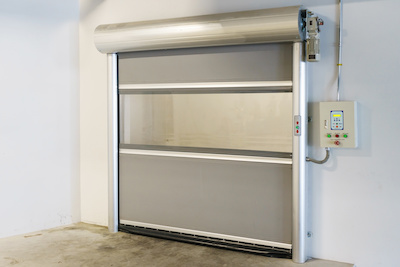
The slower doors move, the longer they take to open and close, the more energy they force you to have to waste. And there’s nothing they can do about it, since they were never really designed for energy-efficiency, but to look strong and sturdy.
Industrial high-speed doors break those barriers, particularly in refrigerated environments, processing facilities, and busy warehouses where their ultra-fast operating speeds deliver all the advantages required to keep climates under control, while letting the least amount of energy escape for the highest amount of traffic.
Read More
Productivity Drains Putting Loading Docks At Risk
Post by : Anthony Tobar | Post on : January 6, 2023 at 7:50 pm
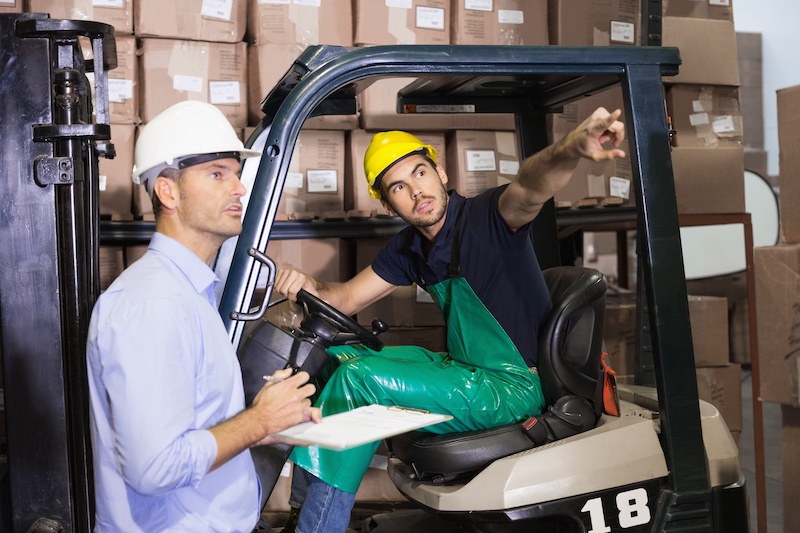
Anything less than shipping and receiving cargo as safely as possible—quickly—puts personnel at risk of serious injury, delays the exchange of goods and services, and can send productivity at the loading dock packing.
U.S. warehouses, for instance, regularly report over 200,000 employee accidents every year, in addition to $80 billion in inefficiency costs on top that, which reveals no shortage of suffering incurred by slow and hazardous operations.
A big portion of this can be attributed to deficiencies in the design and processes of dock areas where harsh weather, airborne contamination, trailer separation and miscommunication can slip through the cracks, endangering freight and workers.
Unfortunately, when plans to mitigate these well-known accident and productivity risks fail, it’s often the reputation of facilities and operations specialists on the line.
That’s because someone has to answer for compliance violations likely to ensue, forthcoming customer complaints, and any compensation requests from injured parties.
But whether it’s employees at risk of taking the fall or your shipments being exposed to damage and delays, the end result is always the same: productivity drains caused by one or more of the loading dock threats below!
LOADING DOCK THREATS WAITING TO FAIL AT ANY MOMENT
1. DOCK GAPS
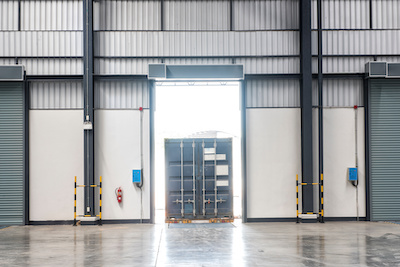
Dock gaps, or tiny crevices surrounding bay doors, tend to add up to several feet of risk exposure across multiple positions, opening you up to a series of damaging effects.
What effects in particular?
Let’s start with the risk of weather-related employee accidents, product damage and airborne contamination that can seep through. If this isn’t enough, how about the untold costs of energy loss per annum, easily somewhere in the thousands per loading dock position. And to cap things off, there’s the simple fact that dock gaps are common cause of failed inspections, since they’re a tell-tale sign of unsealed perimeters deemed unsafe by regulators.
2. MANUAL EQUIPMENT
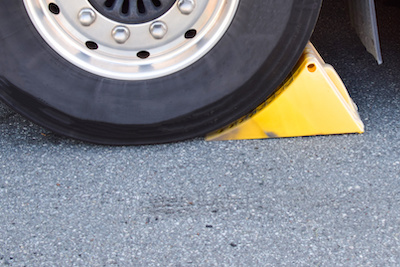
When equipment has to be operated manually, there exists the risk of human inefficiency.
This is the case with the deployment of mechanical dock levelers, when preparing for loading and unloading, and the placing of wheel chocks to keep trailers stationary.
Mechanical levelers, for example, require more physical effort and time to operate, even though their sensitive parts, like springs, will fail and need to be repaired more often than hydraulic systems. Wheel chocks, similarly, depend on someone having to move them in and out of position; again, taking more time, without assurance they won’t slip or be misplaced, unlike with vehicle restraints that are automatic.
3. OUTDATED CONTROLS
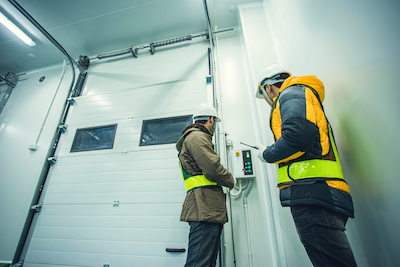
Frequently the single greatest cause of failure between truck drivers, material handlers, and dock equipment is miscommunication.
And if your warehouse is high-volume and fast-paced, then the chances for mixed signals becomes concerning for all.
But it’s not like you can rely on outdated loading dock technology to fix it, when it’s their capability that’s lacking in the first place. Such is the case with security controls that aren’t integrated to activate vehicle restraints, sectional doors, levelers and lights when needed, cluttering shipment protocols instead of streamlining them into a safe and efficient process—operable via interconnected control panels at your command.
Read More
Surfaces Likely To Contaminate Processing Facilities
Post by : Anthony Tobar | Post on : January 6, 2023 at 6:03 pm

Whether you’re a food and beverage processor, a pharmaceutical lab, or operate any other type of facility with strict environmental controls, contamination makes a mess of things.
One common cause for concern when it shows up is corrosion, which, according to NACE International, has a global estimated cost of $2.5 trillion.
And since corrosion is caused in many ways, including exposure to oxygen, moisture, and chemicals, few facilities are safe from cross-contamination risks that follow.
The worst part?
Because corrosion is irreversible, replacement of corroded surfaces is the only option for preventing the goods you produce and deliver from being exposed. In fact, failure to do so as quickly possible may cause operations to be suspended by regulators tasked with rooting out harmful traces of bacteria.
That’s why the most important question to ask oneself while stopping contamination caused by corrosion is: where could it possibly be spreading itself?
The answer may surprise you, because corrosion likes to show itself on common surface materials leaving your processes exposed!
FACILITY EQUIPMENT COMMONLY CONTAMINATED BY CORROSION
1. PRODUCTION MACHINERY

Many industrial plants end up creating the exact conditions that lead to corrosion. And once metal pieces of machinery start to corrode, there’s no stopping it. Not only does this lead to having to replace the corroded parts, but it also increases the likelihood of ongoing contamination. Knowing how corrosion works, it’s not the least bit surprising how often it likes to strike at the very heart and valves of production.
2. FREIGHT VEHICLES
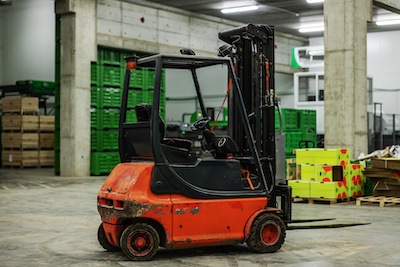
Corrosion can also cause problems for freight vehicles by damaging the equipment’s electrical system. Once moisture gets into the wiring system, it can proceed down the entire length of the wire, which only makes the problem worse. And that’s not all, since, in all likelihood, corrosion may already be taking over exterior metallic surfaces which are likely to come into direct contact with current shipments.
3. ENTRANCE DOORS

Sanitization is critical, especially when you’re working in food and beverage or pharmaceutical industries. But rigorous sanitization requirements can lead to corrosion that rots conventional hollow metal and stainless steel doors from the inside out, making them defenseless against moisture, chemicals, and bacteria. And so, once corrosion is allowed to enter your doors freely, the only way to make sure it stays out is with pedestrian doors that can’t be rotted.
Read More
Why Warehouse Traffic Accidents Are Around The Corner From Today
Post by : Anthony Tobar | Post on : January 6, 2023 at 5:31 pm
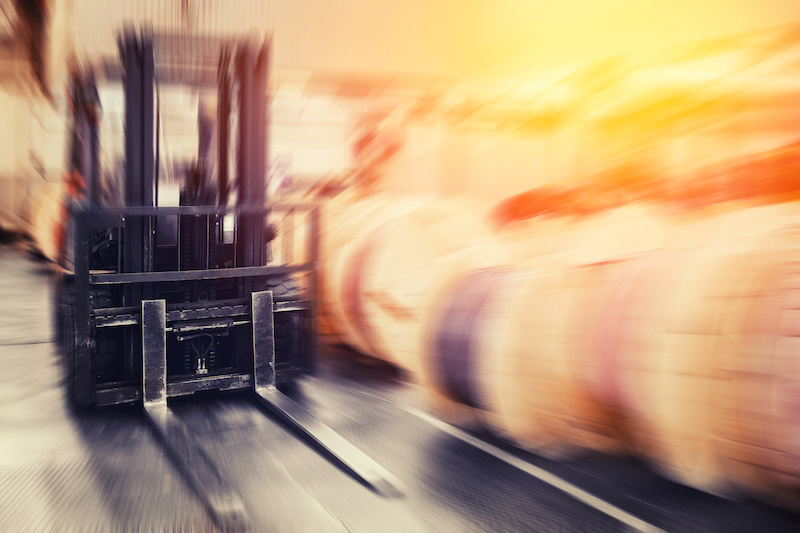
Whether it’s vehicles crashing into people or people crashing vehicles, destruction from warehouse traffic accidents soon follows.
And there’s nothing to be done afterwards that can come close to justifying severe workplace injuries and foreseeable downtime, which, according to the National Safety Council and Sensye, cost a respective $163.9 billion and $172 million a year.
But while particular circumstances involved in warehouse traffic accidents vary on a case-by-case basis, the underlying causes are all too familiar: well-known mishaps that send caution to the wind time and again.
This is how, in many cases, workers are left fighting for their lives, families are forced to shoulder the grief, and workplaces are held liable for any negligence that may have occurred on their part.
It’s hard also not to imagine the incurred costs of emergency repairs, regulatory fines, management scrutiny, as well as diminished employee morale that can be suffered.
All because of one or more of the following drivers of accident damage could be threatening busy work zones like your own!
KEY DRIVERS OF WAREHOUSE
TRAFFIC ACCIDENTS
1. UNSAFE PRACTICES
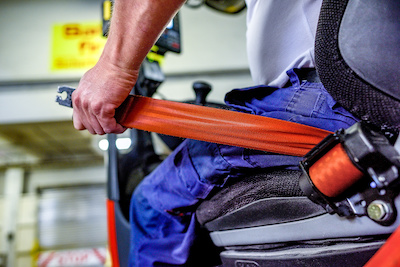
In theory, everyone likes to think they follow traffic safety protocols to the letter. But every now and then, even the smallest oversight can lead to warehouse impact damage and collisions. That’s why regulators, like OSHA, can’t stress enough all the steps that should be taken to prevent traffic accidents in busy work zones, including but not limited to comprehensive traffic controls; training and understanding of proper routes; effective lighting and high-visibility clothing; as well as work zone protections that serve to limit any unauthorized actions, which could otherwise be transgressed.
2. UNPROTECTED BOUNDARIES

Failure to protect warehouse property, equipment, and personnel, using physical markers and barriers, leaves them exposed to worst case scenarios. This is especially true when vehicle and pedestrian traffic is bent on doing everything it takes to keep up with productivity demands. So, to mitigate any potential damage from traffic accidents, onsite premises should always be surrounded by safety and collision hardware made to absorb impacts, as this will help you steer clear of serious injuries and downtime from the need to repair or replace equipment property deemed critical to facility operations.
3. DAMAGE-PRONE HARDWARE

If it’s a good practice to employ traffic markers and barriers to curtail collision impacts in busy warehouses, it’s an even better practice to rely on equipment hardware that doesn’t damage in the first place when struck by moving objects. Unfortunately, this isn’t the case with rolling steel and sectional doors that weren’t made to take a hit, since they require serious maintenance in case of emergency. Also, they don’t guarantee the same thing from happening again, which only leads to exorbitant service costs, and quite a bit of downtime, for something you no longer have to put up with.
Read More
Major Safety Risks Costing Industrial Facilities Over And Over Again
Post by : Anthony Tobar | Post on : November 26, 2022 at 1:25 am

Few places are more at risk for safety accidents, damage, and injury than operations at industrial facilities.
Whether it’s in production environments, the warehouse, at the loading dock, or anywhere else in between, unexpected safety incidents carry consequences that can’t be ignored by operations and facilities specialists.
Among the more serious but not uncommon ones are: employee injuries, product and equipment damage, downtime and repair costs, as well as fines regulators may be forced to issue as a result of violations.
This is simply the nature of industrial environments involving workers in constant motion while operating dangerous equipment for long hours virtually every day of the year.
But just because occupational hazards come with the territory doesn’t mean one is expected to tolerate them, or to not take every precaution necessary to keeping facilities safe and protected at all times, especially when you know what to watch out for.
So what major safety risks are known happen over and over again that may end up costing you?
Keep reading to put a stop to them from now on while ensuring nobody gets hurt on your dime!
HAZARDOUS RISKS INSIDE
INDUSTRIAL FACILITIES
1. WAREHOUSE DAMAGE
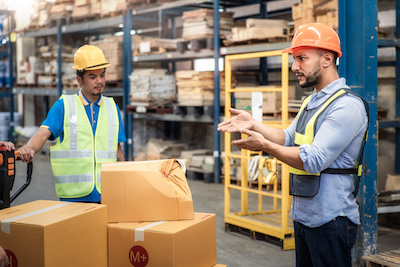
The possibility of damage occurring in high-traffic warehouses is basically never-ending, as any number of products and inventory can be broken, bent, or become defective during transport.
And while these damaged goods can amount to untold losses in revenue, there’s another threat which can cost even more and lead to emergencies: damages to the warehouse itself.
Now, warehouse damage is likely to show itself in many forms. It can be structural and process related, but frequently it’s operable equipment that gets impacted the most.
One example reported on an ongoing basis by maintenance and facilities specialists is damaged rolling steel doors that fail to function properly when struck by forklifts and other moving objects.
Read More: Why Warehouse Traffic Accidents Are Around The Corner From Today
In fact, when it’s all said and done, tens of thousands of dollars are often spent every single year on repairs and replacements, without considering downtime costs sure to accrue until equipment is fully working again.
We know every type of damage which happens at the warehouse comes with a price. But that doesn’t mean there aren’t safe and impactable alternatives you can turn to from now on to make busy freight openings damage-proof!
2. CROSS-CONTAMINATION
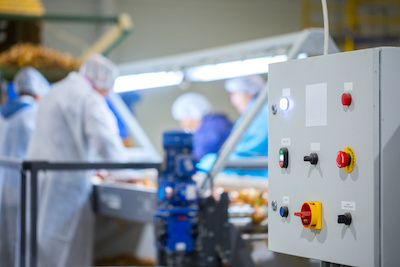
The fact that germs can spread from one place to another is a major concern for production environments that can’t allow cross-contamination to take place due to product safety and compliance requirements.
Yet this is exactly what happens when surfaces and surroundings within industrial facilities do a better job of accumulating harmful bacteria than resisting it.
One common example are entrances that come frequently into contact with food, beverage, or pharmaceutical ingredients being handled left and right.
As soon as they start showing signs of rust and discoloration from daily sanitation procedures—caused by door materials that aren’t corrosion-resistant—they welcome contamination non-stop.
Read More: Surfaces Likely To Contaminate Processing Facilities
Of course, failing to replace rotting entrances is hardly an option when trying to deter regulators from uncovering traces of airborne contaminants flowing freely from one place to another. What is an option, however, is never having to put up with pedestrian doors that rust ever again, thanks to corrosion-resistant alternatives built for the harshest environments!
3. EMPLOYEE ACCIDENTS

Accidents involving employees at industrial facilities happen with frightening regularity and can quickly become a nightmare, depending on the extent of injuries suffered, associated costs, and loss of productivity.
So it’s clear that, given their number of moving objects, exposure to severe weather elements, and the operation of dangerous equipment happening all at once, loading docks deserve the utmost caution.
This is especially true for cargo-handling areas lagging behind the times, which can easily be spotted through unsealed perimeters, the use of manual dock levelers, and controls that fail to integrate seamlessly.
When least expected, any one of these inefficiencies increases the risk of people getting hurt; combined, it’s only a matter of time before everything comes crashing down in the worst ways.
Read More: Productivity Drains Putting Loading Docks At Risk
That’s why prioritizing seamless protection across busy loading docks is perhaps the simplest and most effective way to ensure safer shipments. By stopping harmful elements and productivity from slipping through the cracks, dock equipment that’s high-efficiency helps you do that automatically!
Read More
How To Stop Your Facility From Becoming A COVID-19 Hotspot
Post by : Anthony Tobar | Post on : May 19, 2020 at 1:08 am
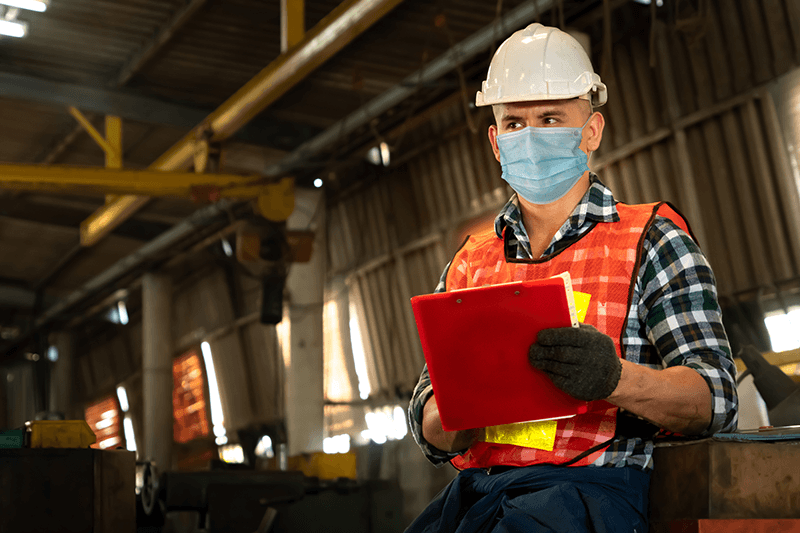
To date, the only thing certain about COVID-19 is that until a vaccine is produced and made available to the general public, the global pandemic, which has surpassed a 6-figure death toll in the U.S., isn’t going away any time soon.
All this despite the lifting of stay-at-home orders from states that are witnessing gradual declines of total new cases.
But while many businesses are welcoming the opportunity to fully reopen their doors again, the grave and present danger of sudden outbreaks is impossible to ignore, particularly for plants, warehouses, and distribution centers that employ hundreds or even thousands of workers in close quarters.
In these environments it’s likely for even a single case to spiral into a domino effect of new cases quickly and without remorse.
In fact, it’s already happened at dozens of plants that became major hotspots for the transmission of COVID-19, and can most certainly happen again, if not for the following safety measures that enable you to root out harmful cases and prevent the spread of COVID-19 at your facilities!
ADVANCED STRATEGIES FOR PREVENTING
COVID-19 AT YOUR FACILITIES
1. DISEASE SURVEILLANCE
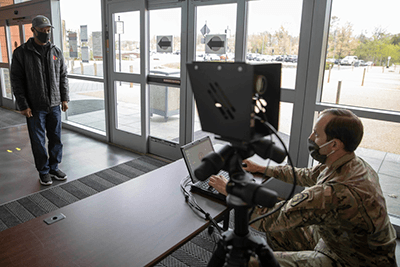
Critical to helping you identify who could be infected with COVID-19 prior to gaining entry into your facilities, disease surveillance is a no-nonsense mitigation strategy that’s currently being employed at the highest levels.
Take the U.S. Army, for example:
To combat COVID-19, they have elected to screen the body temperature of personnel seeking access into their military facilities, using thermal imaging devices that don’t require any physical contact and can be operated safely at a distance of six to eight feet.
And since this screening process only takes a few seconds to complete, disease surveillance, via thermal imaging, has been shown to increase the flow of traffic into facilities while identifying common symptoms of infection that would otherwise be allowed spread.
2. HYGIENIC CLEARANCE
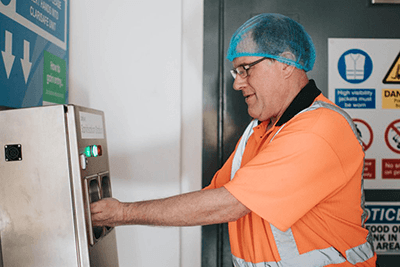
Unquestionably effective in killing off germs and bacteria associated with COVID-19, hygiene of the hands is a preventive mitigation strategy without substitute.
The only issue is, however, that it’s not guaranteed people will sanitize their hands efficiently, or as often as they need, prior to gaining access into populated environments where infectious germs can spread easily through direct or indirect contact.
In this case, only clearance-based hygienic protocols—like the use of sanitation stations that operate seamlessly with point-of-entry systems—can provide facilities and operations specialists with a fail-safe mechanism for allowing untainted room access strictly to personnel who’ve enacted compliance by undergoing automated and secure hand sanitation procedures.
3. TOUCHLESS AUTOMATION
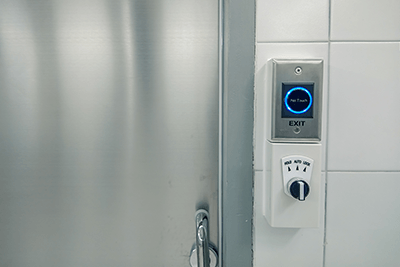
An extremely sanitary and convenient alternative to manually-operated point-of-entry and egress, touchless automation is an intelligent mitigation strategy that removes the need for physical contact with equipment that can readily transmit COVID-19.
And it couldn’t be easier to enforce, thanks to microwave motion sensors that eliminate possible points of contamination, using reliable wave-to-open or hands-free activation that can be triggered anywhere from 2 to 24 inches away across virtually every entrance of your facilities!
All things considered, what else can come close to keeping you and everyone you come into contact with protected than not having to place a single finger on commonly touched surfaces that accumulate viral pathogens non-stop while you work?
Read More













































